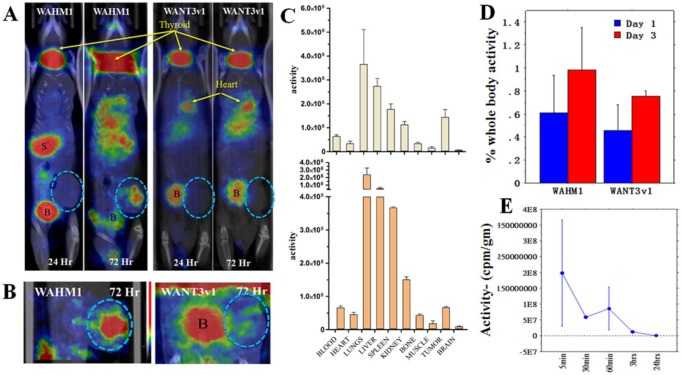Figure 4.
Biodistribution of stapled peptides in tumor xenografts and organs. (A) Z-stack reconstruction of single-photon emission computed tomographic imaging of mice treated with WAHM1 shows dominant uptake in the thyroid (T), stomach (S), and bladder (B). After 72 hours, radioactivity levels in the stomach and bladder have dissipated, revealing significant uptake in the lungs and liver as well as in the tumor (shown exclusively [circled in B] in the respective insets). Treatment with the WANT3-v1 peptide shows dominant uptake in the thyroid and the bladder and in this case in the heart. After 72 hours, there are higher levels in the lungs and liver and clearance is still in process through the bladder (A). (C) Quantitation of I125 tracer levels, measured as radioactivity per gram of tissue in the major organs following treatment with WAHM1 (above) and WANT3-v1 (below), shows significant uptake in tumors after 72 hours. (D) When tumor uptake is expressed as a percentage of body weight, a progressive increase in tracer levels is seen between 24 and 72 hours for both peptides. (E) Radioactivity levels were measured in the blood of 3 animals after a single injection of I125-labeled peptides over a 24-hour period showing a half-life of 20 to 30 minutes.

